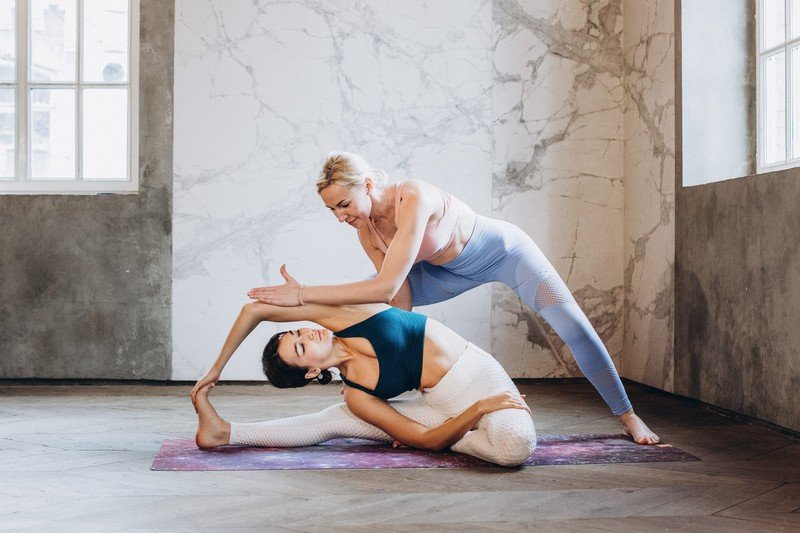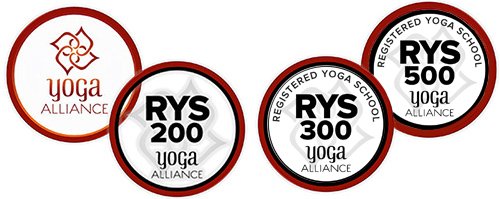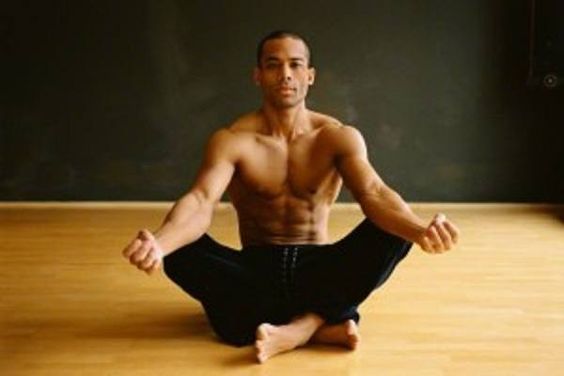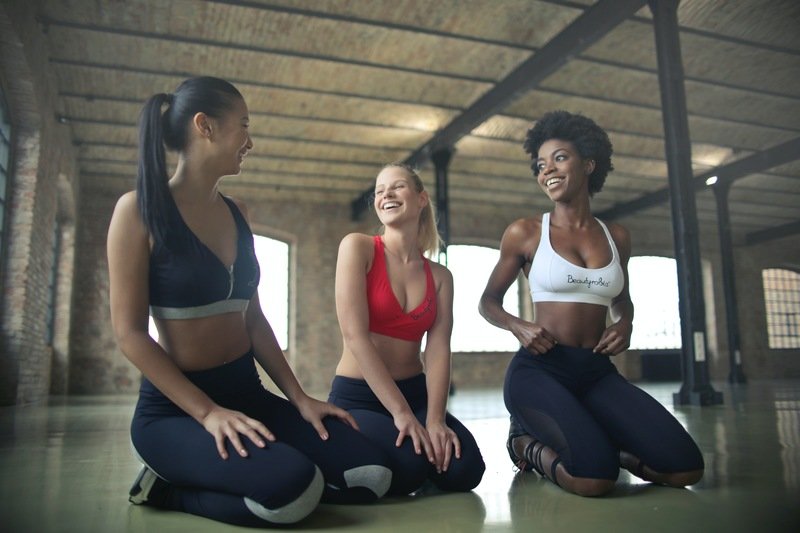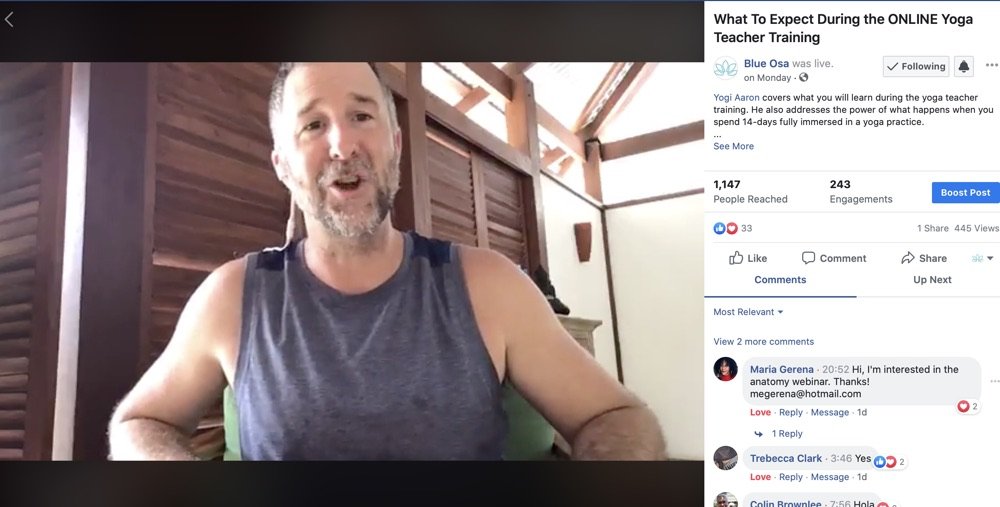Are you considering an online yoga teacher training?
I have one thing to say.
Congratulations!
To rise above the limitations set upon us during this difficult time is only a testament to your strong will and dedication to fulfilling your life purpose.
It’s no easy feat having to adjust to all the changes, but I’m delighted to know you’ve stumbled upon this page looking for some answers!
An online yoga teacher training is a unique experience. One that will provide you with the skill set needed to start a beautiful yoga teaching career. But before that could happen you need to make sure that the online yoga school is the right one for you.
There is tons of information online about whether yoga teacher training is right for you but not so much about online yoga teacher training.
If you’ve noticed the surge of yoga schools advertising their online offerings right now, you may also be very confused as to how they differ. Also, who you should start your journey with. The considerations are slightly different from in-person training, as are the questions you need to ask yourself before committing to one.
Yoga teacher training is one thing. Doing it online is entirely different!
If you are feeling underwhelmed with the lack of information available to you, or slightly overwhelmed with the amount of unclear advice, then look no further.
We’ve compiled eight things you should consider before signing up to an online yoga teacher training.
By the time you finish reading, you’ll be able to select the best online yoga teacher training course just for you. It’ll be one that’ll provide you with a solid understanding of yoga philosophy and all the skills needed to teach right away.
These are the 8 Steps To Choosing The Best Online Yoga Teacher Training

Who is the lead teacher?
These days anyone can be a yoga teacher, but that doesn’t mean anyone can lead a yoga teacher training.
Who is leading the yoga school and who your teacher(s) will be are the most important factors when deciding where to train.
As we start in our yoga teacher journey, we will likely adopt the techniques and styles of our teachers until we form a method of our own. So the teacher must teach in a way that resonates with us; style, voice, manner. Besides, you don’t want to spend the entire course, forcing yourself to vibe with your teacher. You’ve got to make sure you are in complete alignment with them.
Meet Yogi Aaron and find out how you can make a difference in the world!
Some good questions to ask would be, where did the teacher train? What is their teaching style? And lastly, do you like them as a person?
What is their reputation?
Some yoga schools are world-famous with a pool of renowned yoga teachers. Others are not so well known but still have high-quality teachers and an immaculate curriculum. Or you’ll find a local studio in an unknown location with a newly qualified yoga teacher as a lead trainer. Don’t forget, you’ll also find everything else in between claiming to provide the best yoga teacher training.
One of the best places to look for advice is from the students who have gone before. Scour their websites for testimonials but also look at independent reviews online for honest and uncensored reviews.
Researching is vital before deciding upon a yoga school as previous students’ experience will likely also be yours.
What are the practicum hours?
Practice practice practice! It is fair to say that online yoga teacher training may be less physically demanding than in-person training, BUT it shouldn’t be that far off. How many practice hours does the course provider recommend? And does anyone see you teach? Do you get feedback? These are important questions to consider.
As you are starting your yoga teacher journey, feedback is crucial. How could you become a certified yoga teacher without having ever been observed teaching a class? If a yoga school doesn’t require much of you in this way, it is a major red flag.
Ensure the yoga school asks that you send in recordings of your classes at the very least.
How many hours include live interaction?
Now, just because the course is available entirely online doesn’t mean you should sit and watch pre-recorded videos for 200 hours straight. Live interaction time with your teacher is crucial in developing as a yoga teacher. Daily or weekly live sessions should be a must in the schedule.
Training to be a yoga teacher is a complex, yet rewarding experience, and you will likely have questions along your journey. If you’re directed to a chat forum or a Facebook group for this, it doesn’t scream high hopes for the teacher’s quality of the training or professionalism.
When you study to become a yoga teacher or any other area where you are learning directly from a teacher, you are not just receiving information. The teacher is passing down (hopefully) decades of study, wisdom, and experience, via interaction. This cannot happen through FAQ’s and pre-written information.
Do they have a manual for you to keep?
And I don’t just mean a recommended reading list and a stapled handout. Does the yoga school have a branded manual that is created and compiled by their organization? It should contain all the yoga postures, poses and meaning, sequencing, anatomy breakdown, yoga, and other related philosophies, mistakes, and things to look out for when you teach. Any reputable online yoga school would have this as a minimum.
I highly recommend that you also view the syllabus beforehand to ensure you are receiving the best curriculum. At Blue Osa, we don’t just have a detailed manual for our students, we also add free modules of Applied Anatomy and Muscle Activation Techniques for our new Online Yoga Teacher Training.
Once you finish training, your manual is what you’ll have to refer back to. It is worth ensuring the yoga school will provide you with much value even after you’ve completed the course.
What is the community experience?
Ah, your yoga family! The community aspect is often a highlight of yoga teacher training. But you shouldn’t have to miss out on that just because you are completing the course at home. Unless, of course, you’re not really into interacting with others. Still – seek out what’s available to you and see if it aligns with what you want.
Are there forums in place where you can connect with other students? Do you join an alumnus after you have graduated?
All of the best yoga schools will have a community platform for graduates to stay in touch with other students and teachers. Some schools also provide ongoing training to add to your repertoire of skills and certification.
We at Blue Osa regularly hold free classes for our alumni via Zoom. If that is something you value, ask to see what’s available for you after you graduate.
Is it accredited by Yoga Alliance?
Yoga Alliance is a private non-profit that sets the standard for yoga professionals and yoga teacher training programs tall over the world.
When you complete your training with a Registered yoga school, you can trust that the curriculum meets the standard of Yoga Alliance.
Having this accreditation isn’t a necessity to teach. However, if you are serious about becoming a yoga teacher and would like access to all the opportunities around the world, it is worth considering.
Previously, to be accredited by Yoga Alliance, a certain number of contact hours were required.
Now, YA have updated their policies to include Online yoga schools to accommodate the social distancing policy put in place by governments during COVID-19. It is not to say that these changes will be permanent.
So if getting trained online is appealing to you, it is worth acting now.
Do you have to pass an exam?
Would you want to be taught by a teacher who has not passed an exam in their yoga teacher training? Chances are, definitely not.
Having assessments included in the curriculum is a good sign that the yoga school cares more about producing high-quality teachers and less about making quick money.
Many schools nowadays offer a guaranteed pass without any form of examination or observation to ensure you do know how to teach! Ensure the school cares for the quality of their teaching and the success of your yoga career. Check whether they have ongoing assessments or final exams to pass on completion.
We all hate examinations, but we must remain integral on our path to becoming 200-Hour YTT Certified. See it as a means of being the best version of yourself.
So there you have it!
8 steps to choosing the perfect 200-hour Online YTT for you!
Now you know how to choose the best online yoga teacher training, but are you sure it’s the right method of training for you? Find out here!
Whatever you decide to do with your yoga certification, there are certainly a few guarantees. The experience will give you a greater understanding of yourself, a more profound yoga practice, and the opportunity to teach if you so wish!
Don’t limit yourself to the quickest and easiest training program. It is worth your teaching career and personal development that you invest wisely in the education you give to yourself.
Let us know if you have any questions about the Online Yoga Teacher Training.
Want to know more? Watch this break down of the Online Yoga Teacher Training with Yogi Aaron.
Are you still on the fence? We have tons of resources to help you make the best decision for yourself. Sign up for our 5-part series, Is Yoga Teacher Training Right For Me?
About The Author
Fai Fetwi has been exploring the depth of her being for most of her life. First, as an artist, then a teacher, and now a writer. She is intuitively and creatively directing an experience that allows her to be in her full expression, always.
Fai also works closely with others to help actualize their vision aesthetically and beautifully. She is the founder of Wildfai Creative, an agency specializing in web design, writing, and virtual assistance for conscious soulpreneurs.
You can usually find her in the middle of the jungle in an exotic location, self-reflecting, writing, and drinking excessive amounts of coffee.
You can read her reflections on being human at www.wildfai.com.




